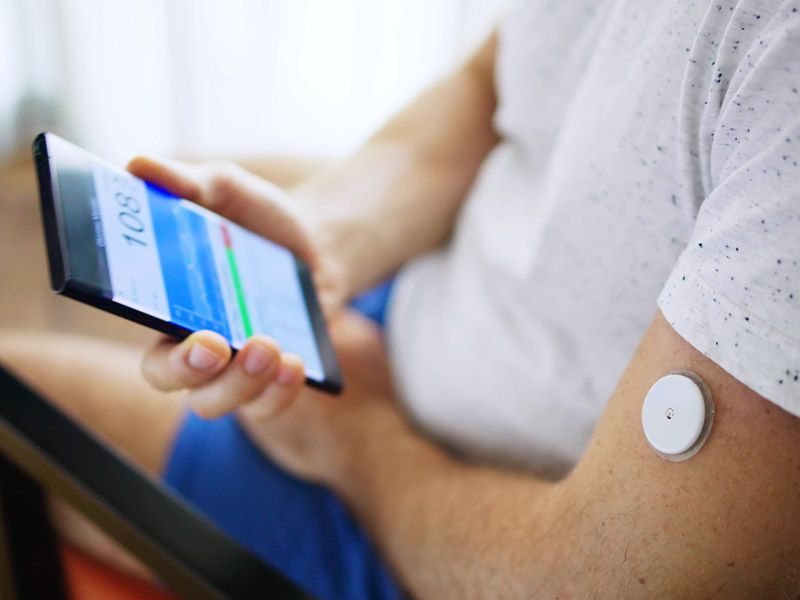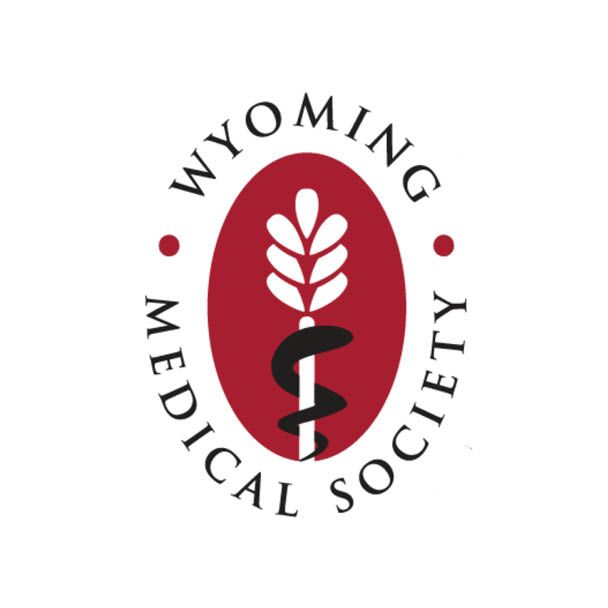
The ABCs of Continuous Glucose Monitoring
The ABCs of CGM: Implementing Continuous Glucose Monitoring
By Tamara Oser, M.D., and Sean Oser, M.D., M.P.H., from the AAFP Blog

Nov. 14, 2023
We were introduced to continuous glucose monitoring when it was recommended for our 8-year-old daughter a year after she had been diagnosed with type 1 diabetes. CGM gave us much more context about her health: We could now see not only when her glucose level was 130 mg/dL just before a soccer game, but also which direction it was headed — and without yanking her away from her teammates for a finger stick before kickoff. And thanks to trend arrows displayed next to her glucose levels, we could also send her to bed knowing whether she needed a snack or not, because we could see whether her glucose level was steady, rising or falling.
We quickly grew to appreciate the ways CGM transformed living with diabetes. We could also easily see how it might be helpful for our patients, too, including those with type 2 diabetes, although research at that point had focused almost entirely on type 1 diabetes.
The evidence for using CGM in type 2 diabetes has mounted since then — first for individuals on intensive insulin therapy regimens, then for people using any insulin therapy at all, and still more recently for some who don’t even take insulin.
Personal CGM became available to many more patients this past spring when Medicare expanded coverage criteria, in line with growing evidence supporting its use and updated standards of care. Now any Medicare beneficiary with diabetes whose therapy includes insulin (even basal insulin) can qualify, as can those who have problematic hypoglycemia but do not use insulin.
For many of our patients, this puts a greater understanding of their glucose patterns within easy reach. It also allows them to trade those hated finger sticks for a simple click that applies their CGM device. “That’s it?” they commonly ask, surprised about the simple application process.
For physicians and other members of the diabetes care team, CGM is like turning on a light in a dark room. We can see patterns and pictures that make it much easier to confidently make medication adjustments, compared to using finger-stick data points or fasting morning glucose readings.
Deciding Together
Whether CGM is right for a particular patient comes down to patient-clinician conversations that enable shared decision-making. Pointing out the ways it could be helpful for patient and physician alike is a great way to start, followed by answering the patient’s questions.
It’s crucial not to let your implicit biases affect which patients you have these conversations with or to make assumptions about which ones will be interested in the technology. We have seen that even patients who face insurance barriers may want to use CGM intermittently to assess medication effects or behavior changes.
Patients should know that trying CGM does not require a lifetime commitment. Vouchers and samples can allow for a short, or even a one-time, trial, and these programs may also help with insurance authorization.
Unfortunately, CGM often requires such authorization. Fortunately, we’ve gotten pretty good at getting approval by understanding Medicare’s coverage criteria, our local Medicaid coverage criteria (which differs among states and can change over time as states add or expand coverage) and knowing what information many commercial payers ask for.
For patients who have tried CGM and want to continue, we’ve found it particularly helpful during the authorization process to be able to tell the payer how their glucose patterns improved, including specific improvements in their CGM metrics. Patients who have tried CGM routinely tell us how much they have learned about the effects of different foods on their glucose levels, and about their experiences of watching changes occur in real time and how they have changed their eating habits in response. Behavior change is hard and we previously spent hours trying to help empower people. But this technology is a powerful motivator that lets us have these conversations in only a fraction of the time.
CGM has also allowed us to adjust patients’ medications more easily and confidently. Instead of trying to piece together a handful of fingerstick data points or fasting glucose readings, we now see a full picture and important patterns. It can be a powerful tool to adjust the therapeutic inertia that is known to be prevalent in primary care.
Integrating CGM Into Practice
So, how can you incorporate CGM into your practice?
First, think about where it might fit in your workflow.
You can gather patients’ CGM data by asking them to share it with you on the cloud, or by looking at it on their smartphones or devices. We like to ask patients not to make any big changes at first, but to start by observing their data and seeing what they learn. Once we have two weeks of data, we discuss the findings together in person or by telehealth.
Using CGM can also help us decrease the stigma many people with diabetes feel by allowing more opportunities to emphasize where patients are achieving their goals. It’s important not to label CGM data as good or bad, controlled or uncontrolled, because language matters.
If this sounds like a lot of work, remember we’ve found that it makes diabetes care take less work. In fact, we published research that found primary care clinicians who had prescribed CGM even once were seven times more likely to prescribe in the future. To put it simply: Try it; you’ll like it.
Billing for CGM
CPT codes 95249 (for starting a patient on a personal CGM system) and 95251 (for interpreting CGM data, which can be done as often as every 30 days for most payers) ensure you’re compensated for your work. Code 95249 may be billed only once during the time the patient owns the receiver. Codes for remote patient monitoring may also apply.
Further, CGM has been shown to improve glycemic metrics, which can increase payment for practices that use value-based payment models.
Tools for Family Physicians
If our experience with CGM has piqued your interest, you can dive deeper with AAFP resources, starting with a webpage focused on what family physicians need to know. The Academy also offers a detailed CME course (on which we served as faculty) that’s available through Dec. 21 and is set to be updated for 2024; and FPM blog posts on workflow, billing and coding and on this year’s Medicare coverage updates.
We encourage you to give CGM a try, perhaps with just one patient if you’re unsure about adopting it at the practice level. Data continues to demonstrate clinical, psychosocial and behavioral benefits of CGM, and broadening insurance coverage is making it available to more and more patients.
We have found CGM incredibly helpful in improving our patients’ understanding of their glucose levels and patterns, and in adding value to our practice.
Tamara Oser, M.D., is an associate professor in the Department of Family Medicine, founder and director of the Primary Care Diabetes Lab, and associate director of the Practice Innovation Program at the University of Colorado Anschutz Medical Campus.
Sean Oser, M.D., M.P.H., is an associate professor in the Department of Family Medicine, director of the Practice Innovation Program and associate director of the Primary Care Diabetes Lab at the University of Colorado Anschutz Medical Campus.
Disclaimer
This web site is provided for educational and informational purposes only and does not constitute providing medical advice or professional services. The information provided should not be used for diagnosing or treating a health problem or disease, and those seeking personal medical advice should consult with a licensed physician. Always seek the advice of your doctor or other qualified health provider regarding a medical condition. Never disregard professional medical advice or delay in seeking it because of something you have read on the Wyoming Medical Society's website. If you think you may have a medical emergency, call 911 immediately. No physician-patient relationship is created by this web site or its use. Neither WMS nor its employees, nor any contributor to this web site, makes any representations, express or implied, with respect to the information provided herein or to its use.
WyoMed Blog






Browse Our Website
Contact Information
FAX: (307) 632-1973





